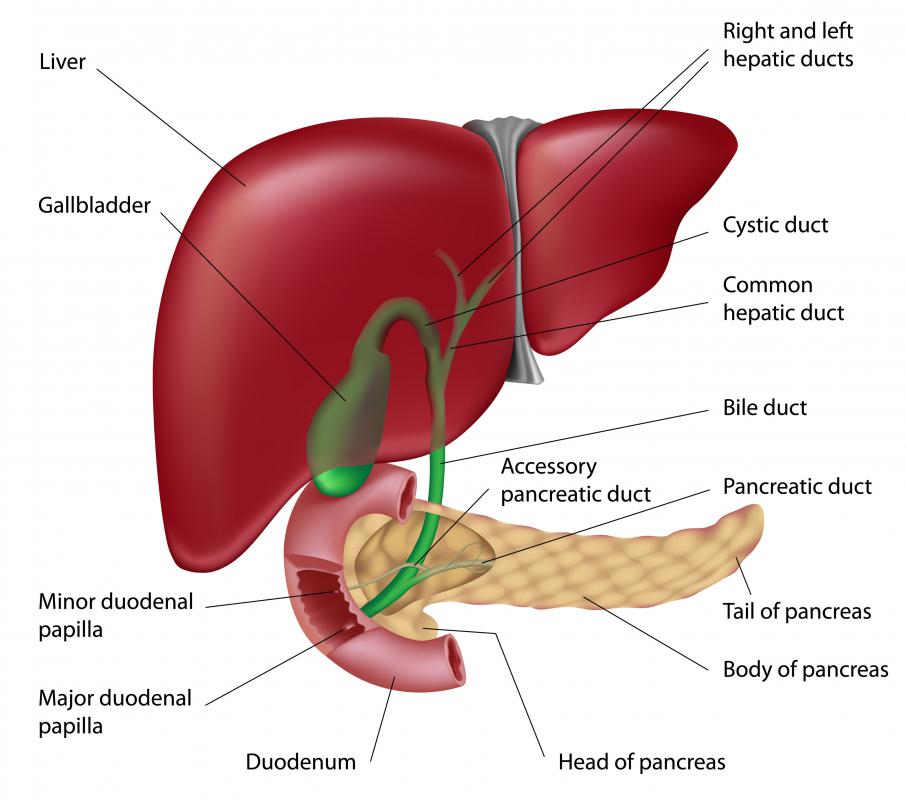At TheHealthBoard, we're committed to delivering accurate, trustworthy information. Our expert-authored content is rigorously fact-checked and sourced from credible authorities. Discover how we uphold the highest standards in providing you with reliable knowledge.
What is the Gastrointestinal System?
The gastrointestinal system is a of the systems of the body primarily responsible for the processing of foods, absorption of nutrients, and elimination of body waste. It is comprised of long tube-like hollow organs starting with the mouth, down to the esophagus, stomach, and intestines, and ending with the anus. This system is mostly divided into different sections by ringlike muscles called sphincters. Other accessory organs of the gastrointestinal system include the teeth, tongue, salivary glands, pancreas, gallbladder, and liver.
Once food enters the mouth, the teeth break down the food into smaller pieces and the salivary glands secrete saliva, which contains enzymes that help moisten the food and start the digestion of carbohydrates. The tongue helps propel the food into the pharynx to be swallowed down to the esophagus, which is approximately 9.8 inches (about 25 cm) long. Through the wavelike movements of the esophagus, also known as peristalsis, food is pushed into the stomach. Between the esophagus and the stomach is the lower esophageal sphincter (LES), which opens to allow food to enter the stomach and then closes to prevent food from going back up again.

Movements in the stomach allows the mixture of food with gastric juices and enzymes, turning it into smaller pieces and making it semi-liquid in consistency. The stomach usually holds 1500 ml (about 50 ounces) of food, but is capable of holding about twice that amount. Other functions of the stomach include the storage of food, the absorption of some food nutrients, and the killing of bacteria through the actions of stomach acids. After processing food in the stomach, it goes through the pyloric sphincter, located between the stomach and the duodenum. The duodenum is the first part of the small intestine, followed by the jejunum and the ileum.

In the small intestines, which has a total length of approximately 19.6 feet long (about 6 meters), food is mixed with substances from the pancreas, liver, and gallbladder for further processing. The main function of the small intestine of the gastrointestinal system is the absorption of nutrients, like vitamins, amino acids, and glucose, from food. These nutrients then go into the blood stream to be used by the body for proper functioning.
The ileocecal valve allows material from the small intestines to enter the large intestine. In the large intestine, which is about 5 feet long (1.5 meters), reabsorption of water and other substances and formation of fecal materials takes place. The presence of bacteria in the large intestines of the gastrointestinal system are important in the processing of some vitamins, such as K and B12, inside the body. Fecal materials are then pushed along the length of the large intestine toward the rectum to be expelled out of the anus through the process of defecation.
AS FEATURED ON:
AS FEATURED ON:












Discuss this Article
Post your comments